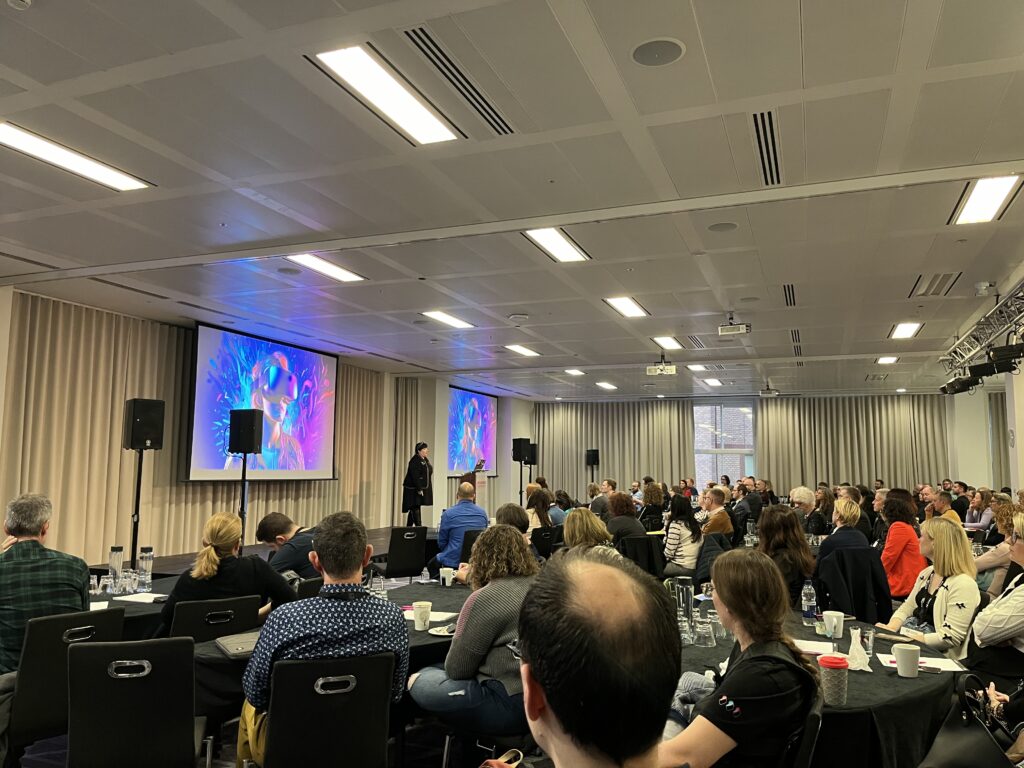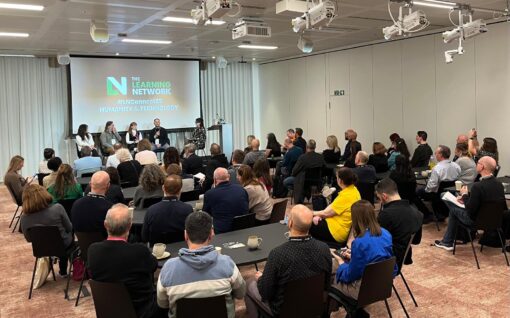Learning Network Connect 2024: Being disruptive and intentional

‘Be the disruption’ was the theme of the Learning Network’s Connect 2024 event, held in London. The opening and closing keynotes dug into that theme in different ways.
But it’s always surprising what emerges in conferences and there was another, unexpected theme. It is related to the theme of disruption – being intentional in what you do. I heard the word intentional quite a few times, but it is not a word I have noticed being used at L&D conferences before.
In her opening keynote, Cara North, author of Learning Experience Design Essentials, urged L&D professionals to be more intentional and purposeful in their work and the decisions they make. She told delegates that it is easy to be quick to react and jump on the latest trends, especially when there is organisational pressure to do so. “Sometimes we feel the pressure to do something big, to do something bold, when just a small change can really set the pathway to making a bigger disruption.”
North’s take on disruption is to make it personal, providing advice on how L&D professionals can be more disruptive themselves. She told delegates to think through what they are trying to achieve, how it will impact others, what the legacy is and what’s the ‘guiding light’ for disruption. She says seeking out different perspectives and being inclusive are also key components of intentional disruption.
Learning industry analyst Laura Overton echoed some of these sentiments in her closing keynote on disruption. She reflected on Towards Maturity research that showed many organisations remain in early maturity stages, acting as content producers rather than enablers of learning. High-performing teams embrace a messier, co-creative approach to address real-world challenges and deliver value.
“Those that get the results are those who are willing to play in the messy world of work as enablers of learning. And sometimes that means us getting up and out of the way. And it always means letting go of things in order to move on. So that’s bold action to be the disruption internally,” Overton said.
Overton urged L&D to tap into change in the organisation – a new strategy, project or role. This enables L&D to ask different questions and try out different approaches.
“In 2025 we need to think a little bit differently. Instead of thinking about what we do, let’s think about why we do what we do, and look for those new moments and opportunities that the disruptive world that we’re working in opens up for us,” she said
One area where L&D professionals can do this is skills. Alongside AI, skills, reskilling and upskilling are red hot topics in L&D and they increasingly overlap with each other.
Toby Harris, chief customer officer at Filtered, set the scene, saying that creating content is easier than ever and AI tools are available to everyone – L&D, subject experts and all workers. Content saturation is already a problem and it is set to get worse now that generative AI tools can create content so quickly.
This problem becomes more acute if you look at L&D’s traditional approach to skills development – and that is to create content. The problem here, according to Harris, is that the quality of content is going down and that L&D continues to rely on content consumption metrics, an approach that does not help measure skills development.
“Our attitude to content is kind of becoming quite unhealthy. So a lot of the learning content that we are putting out there is like junk food. It’s quick to consume. It’s addictive. You want more of it, but it’s bad for you. It’s not a healthy diet of content. It’s certainly not imparting skills,” Harris told delegates.
The skills measurement challenge
This point was echoed by learning technology expert Dr Ashwin Mehta, who said the real challenge was one of measurement. “So what does the population actually know? What can they actually do? How do we change that with our learning or teaching or content strategies? And how does that improvement then serve the business more effectively? So these are all effectively data questions that we need to be answering when we are thinking about deploying content.”
How can L&D team demonstrate the skills development they have delivered? Harris showed the outcomes of a badging initiative at a global consultancy. The organisation implemented a badging programme to validate skills. To gain badges employees had to consume 15 to 30 hours of content, a set of video assessments, plus a final validation process with internal experts to demonstrate that skill. The badges covered a range of topics, including climate and change and AI adoption, and the results show that those who completed six to nine badges saw the biggest positive impact on their career journey.
The badging programme was the most efficient approach to skills development the organisation had used, targeting the priority skills for the organisation. Harris said the approach overcame the issue of creating lots of skills-related content and the self-rating that is traditionally used to measure skills development over time. “The cost of skills through the conventional approach of fire hosing people of content is probably very high, whereas this much more targeted approach is going to be very different.”
Decentralisation of L&D
Ashwin also urged delegates to think differently about the L&D operating model in the age of genAI. He said that AI enables L&D to be decentralised to the level of the employee, a far cry from current centralised models or even hub-and-spoke models with some decentralisation to different geographies and business units.
“When we all have access to sophisticated technology that allows people to have access to the right information at the right time and to make the right decisions, then everything potentially could be decentralised to the point of that worker being able to access everything they need when they need it. And that takes us down a different path of decentralisation.”
The day ended with a session looking at intentionality and how L&D professionals could bring change and new ideas into their work. L&D consultant Fiona McBride led a reflective practice session in which delegates looked at what practical steps they could take based on what they had learned from the day.
McBride used Rolfe’s reflective model, which asks three questions:
- What?
- So what
- Now what?
They seem to be the right questions to constantly ask about L&D trends and practice. What have I seen and heard? What does it mean to me and my practice? And if it is useful or important, what do I do about it?

